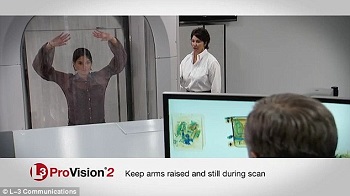New scanners have been unveiled at Singapore’s Changi Airport that eliminates the need for electronic equipment to be removed from bags. The equipment is currently being trialled at two boarding gates at Terminal 3 but could be implemented across the board if successful. The new hand-luggage scanner uses computed tomography (CT) screening, according to a statement from the airport. The technology is similar to the special X-rays currently being used in cancer screening and is used to create detailed images of the items being scanned.
Part of the improvement is that the new scanner is able to produce 3D images rather than the previous two-dimensional versions so passengers no longer need to remove laptops and tablets from their bag. As part of the new system, the trays used to take hand luggage through the scanners are now also being automated, which means that a member of staff will no longer need to return the trays to their original position.
What’s more, two passengers can be processed at the same time, further cutting the time required for checking. The airport hopes that the new system will dramatically speed up the security check process.
Meanwhile, the airport has also introduced a new body scanner that gives a much more detailed outline of a person than previously possible, which means that security officers can home in on suspicious objects. The L3 ProVision 2 body scanner uses millimetre wave (MMW) imaging to achieve this – a big change from the airport’s existing metal detectors. The passenger stands still in a scanner for a couple of seconds while the machine takes a ‘picture’ of them. As skin, clothes and objects reflect and absorb microwaves differently, a clear image can be created on the screen.
Any suspicious objects and their location would be highlighted on the screen.
Passengers will still be required to empty their pockets according to the statement but even if you don’t, items can still be located and targeted for further investigation by airport security officers. If nothing suspicious is detected, the screen simply reads ‘OK’, allowing passengers to pass through the screening. MMW is said to have been certified as having no known health and safety risks and the amount of radiation generated is less than that from a mobile phone. Similar body scanning technology is already being used in other airports in the world such as at Heathrow.








